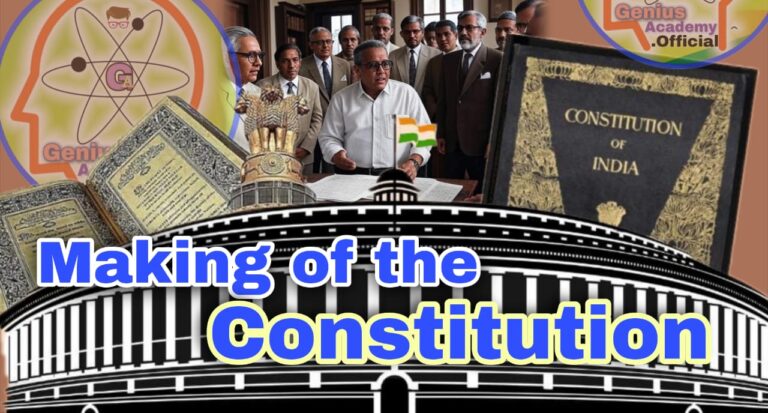Addressing Landslides in India: Mitigation, Risk Management, and Capacity Building
Context
India has recently taken significant steps toward mitigating the impact of landslides, especially in light of increasing extreme weather events. A committee under the Union Home Ministry has approved funding under the National Disaster Mitigation Fund (NDMF) for landslide risk mitigation projects in 15 states. Additionally, capacity-building initiatives for Civil Defense volunteers are being funded through the National Disaster Response Fund (NDRF). These efforts aim to address the severe socio-economic and environmental consequences of landslides in the country.
Understanding Landslides and Their Impact in India
What Are Landslides?
Landslides involve the sudden movement of rocks, soil, or debris down a slope. They occur due to a combination of natural and anthropogenic factors:
- Natural Factors: Intense rainfall, earthquakes, volcanic activity, snowmelt, or natural erosion.
- Anthropogenic Factors: Deforestation, unregulated construction, mining, and agricultural practices that destabilize slopes.
India’s Vulnerability to Landslides
India is among the five most landslide-prone countries globally. This is due to its unique geology, climatic conditions, and anthropogenic pressures:
- Tectonic Activity: India’s northward movement at 5 cm/year increases stress on geological structures, particularly in the Himalayan belt.
- Geographical Spread: According to ISRO’s Landslide Atlas of India, 12.6% of the country’s land is susceptible to landslides.
- Himalayan Region: 66.5% of landslide-prone areas, covering Uttarakhand, Himachal Pradesh, and Jammu & Kashmir.
- Northeastern States: 50% of total vulnerable zones.
- Western Ghats: 14.7%, including parts of Kerala, Karnataka, Maharashtra, and Tamil Nadu.
- Eastern Ghats: Araku Valley region in Andhra Pradesh.
- Climate Change: Increasing extreme weather events have intensified the frequency of landslides.
Recent Incidents
Between January and September 2024, India experienced extreme weather on 93% of the days. This resulted in:
- Casualties: Over 3,238 lives lost.
- Property Loss: Destruction of 2.35 lakh houses/buildings.
- Agricultural Damage: Crops on 3.2 million hectares impacted.
India’s Current Framework for Landslide Mitigation
Legal Framework
- Disaster Management Act, 2005: Provides a comprehensive legal and institutional framework for managing disasters, including landslides.
Hazard Zonation and Mapping
- Landslide Hazard Zonation Maps (LHZM): Developed by the Geological Survey of India (GSI) and National Remote Sensing Centre (NRSC), these maps categorize areas based on susceptibility levels, aiding in land-use planning and disaster preparedness.
National Strategies
1. National Landslide Risk Management Strategy (2019): Covers hazard mapping, monitoring, and early warning systems.
2. Capacity Building:
- The National Institute of Disaster Management (NIDM) trains state and national-level authorities.
- The proposal includes training Civil Defense volunteers in disaster response.
3. Technological Advancements:
- Use of the Ensemble Prediction System for accurate weather forecasting.
- Early warning systems combining satellite data, remote sensing, and GIS-based technologies.
NDMF and NDRF: Pillars of Disaster Mitigation
National Disaster Mitigation Fund (NDMF)
- Purpose: Exclusively for pre-disaster mitigation projects.
- Administration: Overseen by the National Disaster Management Authority (NDMA).
- Current Allocation: Funding for landslide risk mitigation in 15 states, focusing on high-risk zones.
National Disaster Response Fund (NDRF)
- Purpose: Post-disaster response and capacity building.
- Current Focus: Training and preparedness programs for Civil Defense volunteers in all states and UTs.
Challenges in Addressing Landslides
Geological and Climatic Challenges
- Unpredictable and extreme weather events exacerbate slope instability.
- Rapid urbanization and deforestation intensify the risk in vulnerable zones.
Infrastructure Deficits
- Inadequate funding for implementing mitigation projects.
- Lack of advanced technology in local-level early warning systems.
Capacity Gaps
- Limited trained personnel for disaster management.
- Insufficient public awareness about landslide risks and preventive measures.
Proposed Measures for Landslide Risk Reduction
1. Enhancing Early Warning Systems
- Real-time monitoring using satellite imagery, rainfall data, and geospatial tools.
- Strengthening last-mile connectivity to ensure timely dissemination of warnings.
2. Sustainable Land Use Planning
- Restricting construction in high-risk zones.
- Promoting reforestation and sustainable agricultural practices to stabilize slopes.
3. Strengthening Legal and Institutional Mechanisms
- Enforcing stricter building codes in landslide-prone areas.
- Enhancing coordination between central, state, and local agencies.
4. Capacity Building and Community Awareness
- Expanding training programs for disaster response teams and local volunteers.
- Conducting regular drills in landslide-prone communities.
5. Technological Innovations
- Leveraging AI and IoT for predictive analysis.
- Developing mobile applications for public alerts and reporting hazards.
6. International Collaboration
- Learning from global best practices, such as Japan’s slope stabilization techniques and Switzerland’s real-time landslide monitoring systems.
Recent Policy Initiatives in India
1. Committee Approvals
- Union Home Ministry’s approval of disaster mitigation and capacity-building projects.
- Allocation of NDMF funds for landslide mitigation and NDRF funds for Civil Defense training.
2. Focus on High-Risk Zones
- Targeting 15 states with the highest landslide vulnerability.
3. Data-Driven Decision Making
- Incorporation of ISRO’s Landslide Atlas into planning and zoning decisions.
Way Forward
Strengthening Resilience
- Infrastructure Investments: Modernize early warning systems, improve road and slope stabilization, and build safer housing in vulnerable regions.
- Legislation and Enforcement: Amend existing laws to address emerging risks due to climate change.
Inclusive Approaches
- Involve local communities in risk assessment and mitigation efforts.
- Focus on vulnerable populations, such as rural and tribal communities in remote landslide-prone areas.
Research and Development
- Allocate more resources for studying landslide dynamics and climate change impacts.
- Collaborate with academic and research institutions to develop cost-effective mitigation solutions.
Conclusion
Landslides remain a persistent challenge for India, compounded by its diverse geography and changing climate. However, with proactive measures such as early warning systems, capacity building, and sustainable land use practices, their impact can be significantly reduced. The government’s recent initiatives, funded by NDMF and NDRF, mark a critical step toward creating a resilient framework for disaster management. Prioritizing research, innovation, and community engagement will be essential in safeguarding lives, property, and livelihoods in landslide-prone regions.
Daily Mains Practice Questions
UPSC (CSE) Mains Questions on Landslides in India
GS Paper II: Governance, Constitution, Polity, Social Justice, and International Relations
| [Q1.] Landslides are one of the most frequently occurring disasters in India. Discuss the underlying factors contributing to landslide vulnerability and suggest measures to mitigate their impact. (250 words) |
| [Q3.] Evaluate the effectiveness of the Disaster Management Act, 2005, in addressing landslides and similar natural disasters in India. Highlight its limitations and suggest improvements. (250 words) |
| [Q3.] How can the use of advanced technologies such as GIS, remote sensing, and early warning systems strengthen disaster mitigation efforts in India? Illustrate with examples. (150 words) |
| [Q4.] “Sustainable land-use practices can significantly reduce landslide risks.” Critically examine the role of policy, community participation, and capacity-building programs in achieving this goal. (250 words) |
| [Q5.] What is the role of the National Disaster Mitigation Fund (NDMF) and National Disaster Response Fund (NDRF) in strengthening India’s disaster preparedness? Discuss with reference to recent initiatives for landslide mitigation. (250 words) |
GS Paper III: Technology, Economic Development, Biodiversity, Environment, Security, and Disaster Management
| [Q6.] India is one of the most landslide-prone countries in the world. Explain the geological and anthropogenic reasons behind this vulnerability. Suggest comprehensive strategies for risk management. (250 words) |
| [Q7.] Discuss the importance of hazard zonation maps in disaster management. How have Indian agencies like ISRO and GSI contributed to improving disaster preparedness? (150 words) |
| [Q8.] Climate change has exacerbated the frequency and intensity of landslides in India. Analyze its impact and propose sustainable solutions to mitigate these risks. (250 words) |
| [Q9.] Examine the significance of capacity building and community participation in reducing the impact of landslides. How can Civil Defense volunteers play a crucial role in this context? (150 words) |
| [Q10.] Critically analyze the challenges and opportunities in implementing India’s National Landslide Risk Management Strategy (2019). (250 words) |
FAQs on Landslide Mitigation and Disaster Management
1. What are the main causes of landslides in India?
Answer:—
- Natural Causes: Intense rainfall, earthquakes, snowmelt, and natural erosion.
- Human-Induced Causes: Deforestation, unregulated construction, mining, and unsustainable agricultural practices.
- Tectonic Activity: India’s geographical positioning makes regions like the Himalayas and Western Ghats particularly vulnerable.
2. What are the most landslide-prone regions in India?
Answer:—
- Himalayan Region: Uttarakhand, Himachal Pradesh, and Jammu & Kashmir (66.5% of total vulnerable zones).
- Northeastern States: Assam, Arunachal Pradesh, and others (50% of India’s total landslide-prone areas).
- Western Ghats: States like Kerala, Karnataka, and Maharashtra.
- Eastern Ghats: Araku Valley region in Andhra Pradesh.
3. What are the key mitigation measures for landslides?
Answer:—
- Developing Landslide Hazard Zonation Maps.
- Implementing early warning systems using GIS and satellite data.
- Enforcing strict land-use regulations in high-risk areas.
- Promoting sustainable practices like afforestation and slope stabilization.
- Capacity building and training programs for local communities and disaster response teams.
4. What is the role of the National Disaster Mitigation Fund (NDMF) in landslide management?
Answer:—
The NDMF funds pre-disaster mitigation projects, such as:
- Slope stabilization efforts.
- Development of hazard maps.
- Implementation of early warning systems.
- It is overseen by the National Disaster Management Authority (NDMA).
5. How does climate change contribute to landslides?
Answer:—
- Increased frequency of extreme rainfall events leads to soil saturation and instability.
- Accelerated glacial melt and snowmelt destabilize slopes in the Himalayan region.
- Rising temperatures disrupt natural ecosystems, weakening slope stability.
6. How are Civil Defense volunteers involved in disaster management?
Answer:—
- They receive training under the National Disaster Response Fund (NDRF) to handle disaster situations.
- Tasks include evacuation, rescue operations, first aid, and public awareness campaigns in vulnerable areas.
7. How does technology aid landslide risk management?
Answer:—
- GIS and Remote Sensing: For mapping vulnerable zones and monitoring changes in terrain.
- Early Warning Systems: Using real-time data from satellites and meteorological observations.
- Predictive Tools: Employing machine learning and AI for risk assessment.
8. What is the National Landslide Risk Management Strategy (2019)?
Answer:—
This strategy focuses on:
- Hazard mapping and risk assessment.
- Developing early warning systems.
- Building institutional capacities for response and mitigation.
9. What role do international best practices play in India’s landslide management?
Answer:—
India can learn from countries like:
- Japan: Advanced slope stabilization techniques.
- Switzerland: Real-time monitoring systems.
- Norway: Community-based disaster preparedness models.
10. What are the main challenges in implementing disaster mitigation policies in India?
Answer:—
- Inadequate funding for mitigation projects.
- Lack of coordination between central and state agencies.
- Insufficient community participation and awareness.
- Technical challenges in deploying advanced early warning systems.





